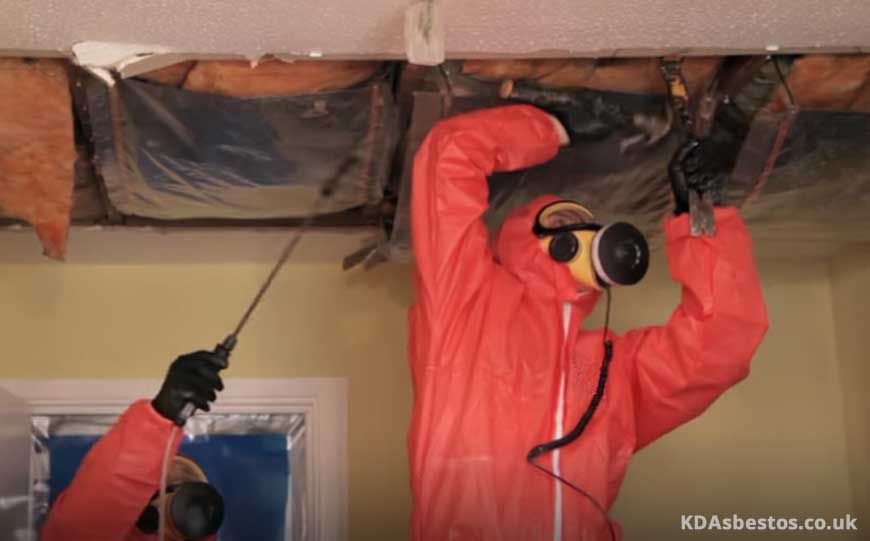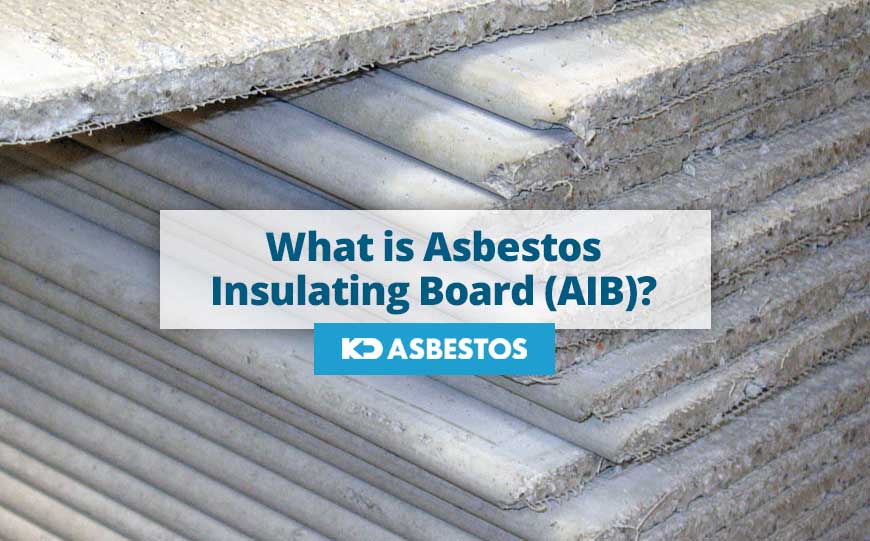
It’s widely known asbestos is a dangerous substance, yet it was present in many manufactured materials in the past.
Many of these materials can be found in properties, including residential homes, factories and warehouses.
One in particular is asbestos insulating board, also referred to as AIB.
But what exactly is AIB, and why was it used?
We answer these questions in more detail below.
Table of Contents
What is Asbestos Insulating Board?
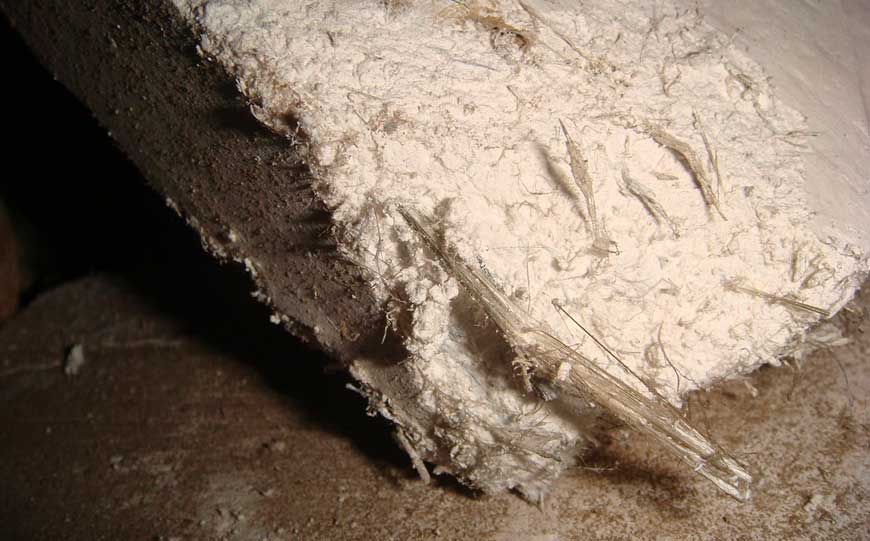
Image credit: Environment News Service
Asbestos Insulating Board is a low density board.
This building material was commonly used for insulation purposes, and for a variety of construction projects.
It works well against fire and heat, as well as for sound insulation.
It was commonly applied to walls and ceilings, and on fire doors and partitions.
AIB generally contains amosite and/or chrysolite asbestos.
These are also commonly referred to as brown and white asbestos respectively.
Whilst it’s not made purely from asbestos alone, asbestos fibres are present in the compound that ultimately manufactured AIB boards.
AIB was banned in the UK in 2000, but prior to that it was heavily used, especially between the 1960s and 1970s.
Hence, one may still find this material in buildings which were built during those times, and even in those which had been refurbished in that timeframe.
Is Asbestos Insulating Board Dangerous?
Yes, and there is no way around this.
AIB contains asbestos, and as with any other asbestos containing materials it is considered to be a serious health hazard.
By now it is a well known fact that asbestos exposure leads to a slow and painful death after several years.
Medical studies show numerous serious conditions that can arise from asbestos exposure, including asbestosis and lung cancer.
If AIB is disturbed, asbestos fibres can be released into the air which are easily inhaled.
AIB contains a high amount of asbestos, which is generally between 20% and 45%.
This is around twice as much asbestos content as is generally present in asbestos cement.
Where is Asbestos Insulating Board Found?
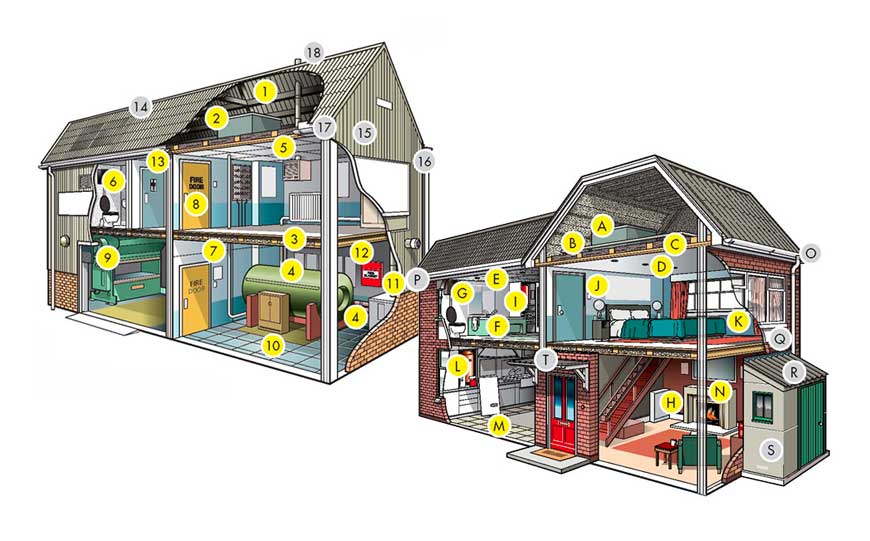
Image credit: HSE
AIB was used extensively, since it was widely available and considerably cheap to produce.
Due to its insulating properties, it was often installed in various settings and applications.
As a result, it is found in various places, from houses to larger buildings and establishments such as schools, hospitals, and offices.
Asbestos insulating board was used on partition walls, ceiling panels, soffits, and bath panels.
It was often used under window boards and in panels below windows.
It was also used in lift shaft linings, uplifts to roof lights, service ducts, and ceiling tiles.
It was also often used in fireproofing panels installed in fire doors and as a fire retardant board when compartmentalisation projects were carried out.
In short, AIB can be found in a whole variety of places, which for an asbestos surveyor is a minefield.
What Does Asbestos Insulating Board Look Like?
AIB are essentially panels or boards.
However you will not notice any particular visual difference from other panels and boards used in construction, making them hard to identify.
Moreover, AIB could have been painted or even hidden behind other materials.
As a result, it’s quite common to not notice such boards, or be aware that they may be present.
Thus, since you cannot really tell any difference between AIB and other materials, the only way to identify whether it is AIB is to carry out an asbestos survey.
Asbestos fibres are microscopic.
So you will not be able to see them unless an analysis of a sample of the material is carried out in a laboratory.
Important Facts About Asbestos Insulating Board
Risks to Asbestos Surveyors
Building surveyors may easily come across AIB.
While carrying out the survey on site, surveyors may encounter AIB and even possibly disturb it.
AIB could be present in various places, including soffits, ceiling tiles, ducts and fire door linings.
As long as the material is in good condition and not deteriorating, the associated health risks are small.
However, great caution should be exercised by surveyors, especially in commercial buildings where the use of AIB is more likely to be in bigger quantities.
Risks to Property Owners
AIB can be present both in domestic properties as well as commercial settings.
In residences it could have been used both internally and externally, such as in soffits and ceiling linings.
In commercial properties it could be in ceiling tiles, boards used for service risers and infill panels, ductwork and in fire doors.
The higher the incidence of asbestos use, the more building owners will encounter difficulties and costs associated with property management and removal.
Dangers of Removing Asbestos Insulating Board
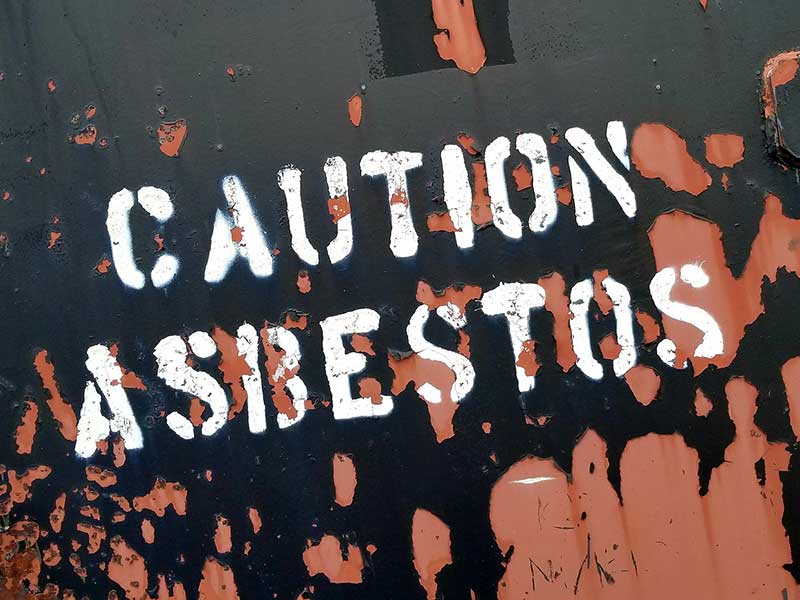
Work carried out on any types of asbestos could be highly hazardous.
Even small and minor tasks are best left in the hands of someone who is appropriately certified and trained to deal with asbestos removal.
For bigger projects, or in cases where AIB is found to be in a poor and deteriorating condition, it is a must to contact a licensed asbestos contractor.
It is important to note that asbestos insulating boards can break quite easily, and as a result this will lead to substantial release of asbestos fibres.
Even with some abrasion on the surface, AIB can release such hazardous fibres into the air.
If other tasks, such as drilling and sawing are carried out, large quantities of asbestos fibres would be released.
So if removal of such a material is to be carried out, it is definitely best to leave it in the hands of a licensed professional.
Uncontrolled AIB Removal
Uncontrolled AIB removal refers to when the removal process is carried out with little or no control measures in place.
As a result, asbestos fibres will easily be released in the air, leading to asbestos exposure.
Any asbestos concentrations in the air which are above the control limit of 0.1 fibres per cubic centimetre of air is considered very dangerous.
Generally, uncontrolled removal of AIB ends up resulting in an exposure level of 10 fibres per centimetre cubed of air.
Hence this is around 100 times more than the current legal control limit.
Thus it is highly dangerous and should not be undertaken.
Such a task should be handled by a professional who is licensed by the HSE, as this guarantees the best possible expertise in removing such dangerous material.
Controlled AIB Removal
Even controlled AIB removal has its dangers as utmost caution needs to be exercised throughout.
There are several control measures which need to be put into place in order to ensure that any potential asbestos exposure is as low as possible.
Evidently, controlled AIB removal needs to be very well planned and carefully undertaken.
This is why it is a process that has to be carried out by an experienced and licensed asbestos removal contractor.
Preparatory Steps
The removal process itself may be carried out in slightly different ways, depending on the particular situation.
An adequate assessment has to be carried out first and a valid reason for removal needs to be found.
Thereafter a licensed asbestos removal contractor will need to be contacted to visit the site and plan the process carefully.
The location, quantities and condition of the AIB to be removed will be studied.
Any potential risks and key considerations with regards to the plan of work will need to be considered.
Finally, a detailed plan of work will be prepared, containing specific details and control measures that will be used.
Some paperwork will also need to be seen to as the HSE will need to be informed of the start date and relevant details.
Setting Up the Site
The area will need to be fully sealed and segregated.
To achieve this, an enclosure will need to be built.
This is a virtually airtight containment structure that is generally made from timber and polyethylene.
Negative air pressure units will be used to make sure that the air in the enclosed area is drawn in and not away from the area.
The area will also need to be cleared of anything that is not involved with the removal process.
Warning signs and barriers will also need to be set up.
Access and work area arrangements will need to be checked out and found to be suitable.
Air management systems will be put into place, and throughout the process adequate fibres suppression equipment will be used.
The contractor will make use of certified cleaning and dust control equipment to carry out proper cleaning of the work area afterwards.
Thus, decontamination facilities will need to be put in place according to the HSE requirements.
Removal & Cleaning Process
Once everything has been prepared, the AIB removal process can start.
If the boards are fixed by screws, these will be located and carefully unscrewed, trying to avoid breakage.
If nails are involved, these should be scored with a knife in an attempt to keep any disturbance to a minimum.
Operatives will work in pairs to ensure a suitable level of fibre suppression by means of airless spraying equipment and vacuuming.
All the removed asbestos insulating boards are doubly wrapped up or carefully bagged for disposal.
All dust and debris will need to be cleared away carefully.
Every surface will need to be given a fine and detailed clean, and an inspection will be carried out to ensure that there is no residue or fragments anywhere.
Finally, a 4 stage clearance is carried out to ensure that everything has been left in a safe state following the removal and cleaning process.
Conclusion
AIB removal is a hazardous task that should not be taken lightly.
It is a must to contact a licensed contractor to see to the removal process, as critical measures will be implemented throughout to ensure safe removal.
Great caution to carry out fibre suppression by means of wetting, using H type vacuuming and mechanical airflow management are some of the measures that will be taken.
Needless to say, handling of AIB is carried out as carefully as possible in order to minimise the possibility of breakage.
All personnel who are involved in the AIB removal process will be wearing personal and respiratory protective equipment.
There will also be great care exercised with regards to the decontamination procedures.
The working environment will be enclosed to ensure that any asbestos fibres which become airborne remain in the area.
All such measures cannot be undertaken by the property owner and thus, there is no denying that such a job has to be left in the hands of a qualified professional to safeguard all involved.
